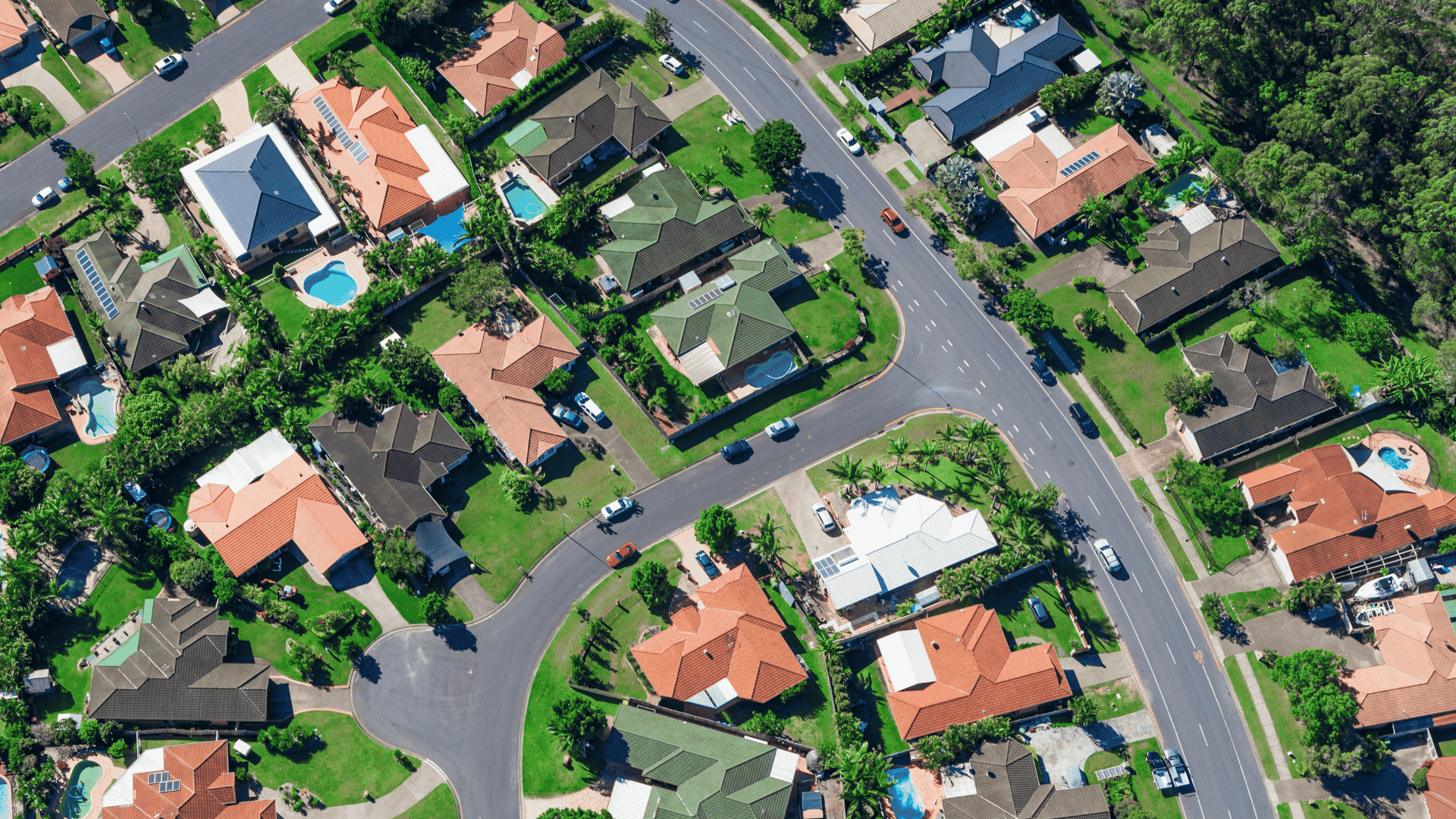U.S. Housing A Buyers Market in June as Price Hold Firm
U.S. Housing Market Trends June 2025: A Buyer-Friendly Landscape for International Investors
FREE DOWNLOAD: 10 Costly Mistakes Foreigners Make Buying U.S. Real Estate
For inversores internacionales with a strategic focus on the U.S. real estate market, staying informed about the latest trends is essential for identifying lucrative opportunities. As of June 2025, the U.S. housing market is showing a significant shift towards a more “buyer-friendly” environment, offering unique advantages for those seeking to acquire properties for consistent cash flow and long-term portfolio growth.
This article, specifically tailored for global property investors, delves into Realtor.com’s latest insights into home prices, inventory, and market pace. We’ll explore how these evolving dynamics can be leveraged to your benefit, enabling stronger negotiation, potentially better deals, and ultimately, more stable returns on your U.S. property investment.
View Investment Properties: Browse Curated U.S. Investment Properties Tailored for Non-Resident investors
Key Takeaways: June 2025 U.S. Housing Market for International Investors
- Steady Home Prices: The listing price of a typical U.S. home has stabilized, showing flat year-over-year growth and a slight dip in the first half of 2025.
- Surging Inventory: The number of homes for sale has surpassed one million for seven consecutive weeks, the highest level since December 2019, offering buyers more options.
- Slower Market Pace: Homes are taking longer to sell (median 51 days), similar to pre-pandemic levels, giving buyers more time for due diligence and negotiation.
- Buyer-Friendly Conditions: This combination of steady prices, increased inventory, and a slower pace creates a market more favourable to buyers, reducing competitive pressure.
- Regional Differences: Southern metros show robust inventory due to new construction, while the Midwest and Northeast still lag pre-pandemic levels.
- Opportunity for Negotiation: For inversores internacionales, these conditions translate into increased negotiation power and potentially better acquisition prices for cash-flowing rental properties.
- DSCR Loans Remain Key: Specialized financing like DSCR loans allows inversores internacionales to strategically leverage these buyer-friendly conditions, bypassing traditional U.S. credit and income requirements.
Related: Expert Panel Predicts 3.5% Annual U.S. House Price Growth in 2025
The Current State of the U.S. Housing Market (June 2025)
The U.S. housing market in mid-2025 is exhibiting clear signs of rebalancing, shifting from the intense seller’s market of recent years to one that offers more breathing room for buyers. This is a crucial development for inversores internacionales who prioritize strategic entry points and long-term value.
According to Realtor.com’s latest weekly housing trends report, “Buyer-Friendly Housing Market Grows as Home Prices Hold Steady”:
- Steady Home Prices: The listing price of a typical home in the U.S. has stabilized, showing flat year-over-year growth. It has also seen a slight decrease in the first half of 2025. This indicates a pause in the rapid price appreciation seen previously, creating more predictable investment scenarios.
- Surging Inventory: A significant boon for buyers, the number of homes for sale has exceeded one million for the seventh consecutive week, a level not witnessed since December 2019. New listings have increased, providing inversores internacionales with a broader selection of potential U.S. property investment opportunities.
- Slower Pace of Sales: Properties are taking longer to sell. The median time on the market is now 51 days, a pace akin to pre-pandemic levels. This extended timeline offers global property investors more time for comprehensive due diligence, thorough property analysis, and strategic negotiation without the pressure of bidding wars.
- Buyer-Friendly Conditions: This combination of stable prices, increased options, and a slower selling pace collectively signals a market that is more favourable to buyers compared to the competitive environment of the past few years.
- Regional Inventory Nuances: While overall inventory is up, there are regional differences. Most major metropolitan areas in the South have surpassed pre-COVID inventory levels due to a construction boom, offering ample choices. Conversely, the Midwest and Northeast still lag behind pre-pandemic inventory levels. (See my article: Zillow’s Updated Regional U.S. House Price Forecast for 2025).
This evolving landscape, characterized by increased options and reduced competitive pressure, directly benefits inversores internacionales looking to make well-considered moves in the U.S. real estate market.
Related: The Best U.S. Real Estate Markets for First Time Investors
Why This Buyer-Friendly Shift Matters for International Investors
The current U.S. housing market dynamics translate into tangible advantages for inversores internacionales focused on building resilient and cash-flowing portfolios.
Enhanced Negotiation Power
The shift from a frenzied seller’s market to a more balanced one means inversores internacionales are no longer always at the mercy of bidding wars and rapidly escalating prices.
- More Leverage: With more inventory and longer days on market, sellers are often more willing to negotiate on price, terms, and even concessions (like covering closing costs). This directly impacts your acquisition cost, improving your potential return on investment.
- Time for Due Diligence: The slower pace allows for more thorough property inspections, financial analysis, and market research, reducing the risk of rushed decisions often associated with hot markets. This is particularly valuable for remote global property investors.
Related: How to Structure Your U.S. Property Investment for tax-Efficiency and Liability Protection
2.2 Opportunities for Better Deals and Stronger Cash Flow
A less frenetic market can unveil properties that genuinely align with a consistent cash flow strategy.
- Value Identification: Investors can more easily identify properties that are appropriately priced relative to their rental income potential, rather than being forced to overpay due to intense competition.
- Optimized Rental Yields: Securing properties at more favourable prices directly enhances rental yields. A lower purchase price relative to stable rental income means a higher capitalization rate (cap rate), signalling a more efficient return on your investment.
- Reduced Turnover Costs: As more buyers are pushed into renting (as discussed in our article “More Americans Renting: A Golden Opportunity for International Property Investors in the U.S.”), you can expect a larger and more stable tenant pool. This leads to reduced vacancies and longer tenant stays, minimizing turnover costs and ensuring a more reliable stream of consistent cash flow.
Confidence and Stability in Decisions
Consumer confidence is also rising, with improved sentiment among both buyers and sellers, and reduced concerns about job security and personal finances (Source: Realtor.com, June 18, 2025). This broader market stability provides a more predictable environment for long-term investment planning.
Related: Your Essential Guide to U.S. Taxes for Non-Resident Real Estate Investors
Strategic Action for International Investors in Today’s Market
To effectively capitalize on this buyer-friendly shift, inversores internacionales should adopt a proactive and informed approach:
- Focus on Fundamentals: Even with more negotiating power, prioritize properties in markets with strong underlying economic fundamentals: job growth, population increase, and landlord-friendly regulations. These factors ensure sustained rental demand and long-term property value.
- Leverage DSCR Loans: Specialized financing solutions like DSCR (Debt Service Coverage Ratio) loans are an ideal tool for inversores internacionales in this market. They enable you to acquire properties based on their income-generating potential, bypassing traditional U.S. credit or income verification requirements. This allows for swift, strategic action on attractive deals without the red tape. (Explore our guide: “DSCR Loans for International Investors: Your Definitive Guide”).
- Target Inventory-Rich Markets Strategically: While the South offers abundant inventory, conduct thorough local market analysis. Ensure the increased supply is met with genuine rental demand to avoid oversupply issues.
- Build a Strong Local Team: The importance of an experienced local U.S. real estate agent cannot be overstated. They can identify properties that truly offer value, navigate negotiations effectively, and connect you with reputable property management to ensure optimal consistent cash flow.
- Stay Informed on Rates: While the Federal Reserve is holding interest rates steady with anticipation of two rate cuts later in 2025, significant drops in mortgage rates are not expected in the immediate future. Continue to monitor daily updates (like our Daily U.S. Mortgage Rate Update) and factor current borrowing costs into your investment calculations.
Related: The Best U.S. Mortgages for Non-Resident Real Estate Investors in 2025
GROW YOUR WEALTH WITH U.S. REAL ESTATE
Start your U.S. real estate investment journey today with high-quality cashflow real estate. Book a llamada estratégica gratuita 1:1 con un miembro de nuestro equipo directivo para discutir su estrategia personalizada.
“Having personally invested in over 120 US rental properties from overseas, I know the true value of getting the right advice and support.
David Garner – Cashflow Rentals
GROW YOUR WEALTH WITH U.S. REAL ESTATE
Start your US real estate investment journey today, and book a llamada estratégica gratuita 1:1 with a member of our senior management team.
“Having personally invested in over 120 US rental properties from overseas, I know the true value of getting the right advice and support.
David Garner – Cashflow Rentals

Frequently Asked Questions (FAQs) on the U.S. Housing Market for International Investors
Here are answers to common questions inversores internacionales have about the current U.S. housing market trends.
Q: Is the U.S. housing market currently a buyer’s or seller’s market?
A: As of June 2025, the U.S. housing market is shifting towards a more buyer-friendly environment, characterized by steady home prices, increased inventory, and a slower pace of sales.
Q: Are U.S. home prices still increasing rapidly?
A: No, the listing price of a typical U.S. home has stabilized, showing flat year-over-year growth and a slight decrease in the first half of 2025, according to Realtor.com.
Q: How much has housing inventory increased in the U.S.?
A: The number of homes for sale has surpassed one million for seven consecutive weeks, reaching levels not seen since December 2019, representing a significant increase in options for buyers.
Q: How long are homes typically staying on the market now?
A: The median time a home stays on the market is now 51 days, which is similar to pre-pandemic levels and offers buyers more time for decision-making and negotiation.
Q: What regions of the U.S. are seeing the most inventory growth?
A: Most major metropolitan areas in the South have seen robust inventory growth, surpassing pre-COVID levels due to a construction boom. The Midwest and Northeast still lag behind pre-pandemic inventory.
Q: How can international investors benefit from this buyer-friendly market?
A: International investors can benefit from increased negotiation power, potential for better acquisition prices, more time for due diligence, and improved opportunities for properties that generate strong consistent cash flow.
Q: Can international investors still get financing in this market?
A: Yes, international investors can leverage specialized financing solutions like DSCR (Debt Service Coverage Ratio) loans, which enable property acquisition based on rental income potential, bypassing the need for U.S. credit history or traditional income verification.







![USA Property Investment for Foreign Buyers [2025 Guide]](https://cashflowrentals.net/wp-content/uploads/2025/07/USA-Property-Investment-for-Foreigners-Expert-2025-Guide-500x383.png)



